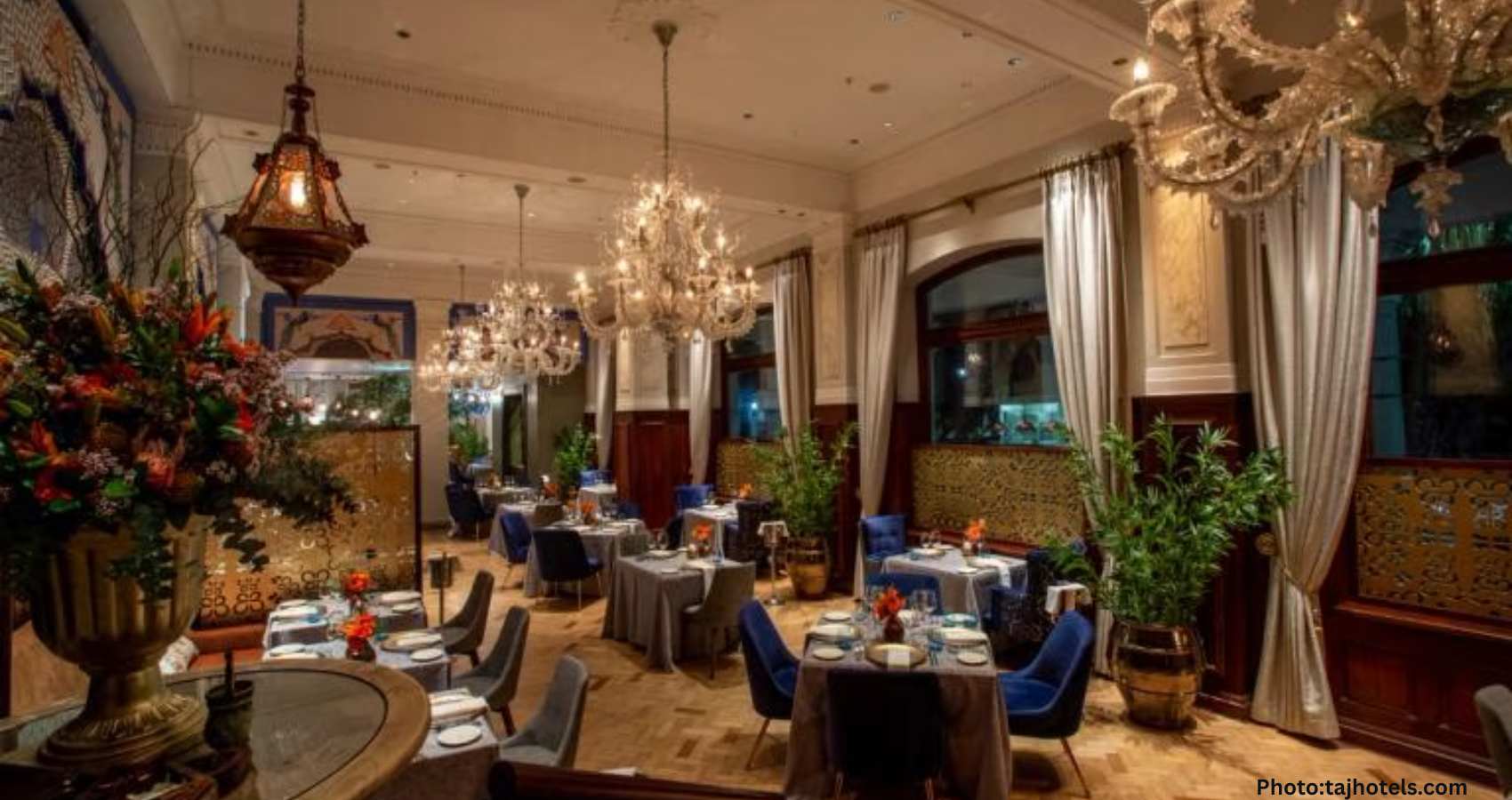Bombay Brasserie, located in San Francisco’s Taj Campton Place, offers a unique blend of Indian and French culinary traditions, creating a vibrant dining experience that celebrates heritage and innovation.
San Francisco’s culinary landscape has welcomed a new gem: Bombay Brasserie. Nestled within the elegant Taj Campton Place in Union Square, this restaurant marks its U.S. debut by merging the vibrant tapestry of Indian cuisine with the sophistication of French culinary artistry. Each month, in addition to its regular à la carte menu, Bombay Brasserie features a rotating dining experience called “Utsav,” aptly named for its festival-like celebration of flavors, emotions, and nostalgia.
At the helm of this culinary venture is Chef Thomas George, a name familiar to those acquainted with India’s finest kitchens. Hailing from Kerala, Thomas grew up surrounded by the rich spices and seafood traditions of the Malabar Coast, where pepper vines and cardamom pods were as familiar as childhood friends. His arrival in San Francisco brings a culinary philosophy rooted in authenticity, expressed through the precision and creativity characteristic of French techniques. “Bombay Brasserie is a celebration of Indian heritage and a testament to the endless possibilities that arise when two culinary worlds come together,” he states. The menu, curated with both precision and heart, tells this story, plate by plate.
The restaurant’s interior is a visual delight, featuring a tapestry of muted colors and curved booths. A stunning chandelier anchors the space, while lotus flowers swirl through hand-painted wallpapers and sculptural sconces. The color palette combines shades of gold ochre, seafoam green, creams, and grays, accented by rich red pillows and gold foil ceilings that create a regal yet welcoming atmosphere. Dining here is not just about food; it is a sensorial journey through India, celebrating culture, beauty, and a sense of belonging.
The menu at Bombay Brasserie offers a gastronomic journey across India, familiar to the Indian palate yet layered with contemporary techniques and presented with Parisian flair. Each section of the menu is thoughtfully curated, with ample options for vegetarians, vegans, and those with gluten or dairy restrictions. Guests can choose from a three-course prix fixe, a five-course Utsav menu priced at $95 per person, or the à la carte main menu. This month’s highlight is the Swatantra Diwas menu.
The culinary journey begins with Shuruvat, a trio of vibrant starters that set a celebratory tone. Diners can enjoy rasam shots, perfectly balancing spice with the sweet tanginess of pineapple, alongside rice and lentil dumplings served on a bed of chunky tomato chutney, and a refreshing crispy kale chaat, a modern twist on traditional spinach patta chaat, presented on a bed of pomegranate yogurt.
The next course, Echoes of Pre-Independence, offers a choice between tawa lamb chops accompanied by panchporan-spiced pumpkin and silky celeriac purée, or a vegetarian plate featuring edamame tikki paired with earthy Kodo millet, smoked tomato, and apricot choka. This course highlights India’s agrarian roots, elevating humble ingredients into refined, layered flavors.
Moving on to Colonial Era Coastal Comforts, seafood enthusiasts will be drawn to the scallop moilee, which is bathed in coconut cream curry and served with delicate string hoppers. The vegetarian option, asparagus moilee, mirrors the coastal flavors with a lighter, greener profile. These dishes reflect centuries of culinary exchange along India’s coasts, where Sri Lankan, Portuguese, and South Indian influences converge into something timeless.
The centerpiece course, titled 1947 – A Milestone on the Plate, showcases India’s post-independence culinary icons. Diners can savor butter chicken and tandoori morsels served in a smoked tomato makhani sauce, while the vegetarian alternative features kofta with squash blossoms and Bellwether Farms ricotta in the same creamy sauce. Accompanied by dal makhani and soft naan, this course is indulgent, soulful, and unapologetically celebratory.
The finale presents a playful reimagining of tradition: elaneer payasam mousse—a tender coconut pudding reinterpretation—paired with raspberry gelato and a bright chili and passion fruit gel. The result is a tropical, tangy dessert that captures the vibrancy of contemporary Indian cuisine.
Among the standout dishes not to be missed are the Truffle Paneer, marinated with garlic yogurt and plated with olive tapenade and a hint of truffle, merging humble paneer with French indulgence; King Salmon, glazed with mustard and served with tobiko beurre blanc, creating an umami-rich bridge between Punjab and Provence; and Avocado Bhel, which transforms the classic Indian street snack into a refined starter with the addition of creamy avocado.
The Duck Confit Samosa, stuffed with tender duck confit and apricots, perfectly balances traditional French and Indian flavors, making it another must-try dish.
The cocktail menu at Bombay Brasserie is equally inventive, featuring drinks infused with Indian ingredients and global techniques. The Bombay Spritz, with rose-citrus mist and Aperol, offers a refreshing nod to Indian summers, while the Adraki Punch, made with fig-infused vodka, lemon, grapefruit, honey ginger syrup, and cider foam, is both refreshing and spirited.
For whisky enthusiasts, the Paan cocktail, crafted with paan nectar and served table-side with a paan tea smoke, is subtle and smooth. Each drink reflects the restaurant’s commitment to innovation and tradition.
San Francisco diners can expect a singular, flavor-packed celebration under Chef Thomas George’s guidance. Here, the flavors of home not only travel well—they arrive transformed, celebrated, and unforgettable. Every dish feels like a conversation between past and present, bridging the kitchens of our childhoods with the culinary capitals of the world. For the Indian diaspora, Bombay Brasserie offers a taste of nostalgia dressed in elegance; for others, it invites them to discover India’s culinary heritage in its most refined form.
Source: Original article

